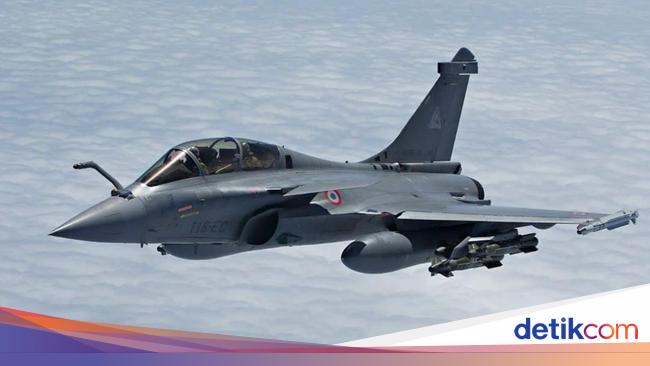In some ways potential defense procurements is hindered by Prabowo's own hang-ups and ambitions. He seems to still hold a grudge against the US. This made him reject the F-16 outright despite that it's a relatively easy purchase politically.
...
Prabowo does not want people to remember him as the guy who bought used equipment in the next election. It may affect his electability.
One hopes he can get over those.
Anyway, most likely the plan gets parceled out into several stages with only a small portion approved immediately.
1. Love your insight on Indonesia’s ability to spend more to get less. IMO having the correct weapons procurement strategy will affect future geo-political outcomes in the Indo-Pacific. This is why Indonesia’s Minister of Defence Prabowo Subianto is the biggest obstacle to relational defence procurement and planning for Indonesia’s defence ministry. Without a functioning procurement system, no effective strategy can be executed. His refusal to buy F-16Vs should be celebrated in at least KL and Hanoi.
2. As a citizen living within ASEAN, I am grateful Prabowo is screwing up fighter procurement to the TNI AU in 2021, to ensure that Indonesia (and by implication ASEAN) has less options in negotiating with China in the 2030s. Thank goodness Singapore’s leadership has read the geo-strategic situation correctly and acted on it without expecting help from ASEAN’s leader. The acquisition of 4 F-35Bs (delivery in 2026), the future basing of a fighter squadron in Guam and increased investments in military infrastructure in Australia are part of Singapore’s larger security strategy.
(a) The Singaporean fighter training presence in Guam will begin around 2029. This will consist of a squadron of aircraft and associated personnel, and include the construction of hangars, aprons, and support facilities for the detachment footprint. The RSAF also operates at other USAF bases. The 425th Fighter Squadron currently flies 12 F-16C/Ds out of Luke AFB, Arizona; the 428th Fighter Squadron flies 10 F-15SGs from Mountain Home, Idaho; and the RSAF operates AH-64D helicopters from Silverbell Army Heliport in Marana, Arizona.
(b) The army training facilities being built in stages in Australia will allow the SAF to train up to 14,000 personnel in Australia, for over 18 weeks a year. A key modern facility being built is the Combined Arms Air-Land Ranges (CAALRs). These will allow the Singapore Army and the RSAF to conduct brigade-level joint training by 2028 — enabling Singapore to greatly reduce its military training footprint in Taiwan.
(c) These brigade level CAALRs facilities will greatly increase combined arms training realism for both the SABs and SIBs (that the SAF cannot easily get with the existing armour infantry training ground in India, or even the excellent MBT training grounds in Germany). The secret to the SAF combined arms division’s ability to execute — is grounded at local training at battalion level, for conventional and urban operations.
(d) Improved combined arms training at brigade level, for conventional and urban operations, at an overseas location is an important step up for RSAF’s capability. Correct use of ISR by the RSAF is an part of pilot and WSO training. The aim is to train to provide CAS to our ground forces at these new brigade level CAALRs facilities. This is done through higher HQ use of real time AI and near real time use of city mapping technology (see the Israeli examples of air power used in an urban area at the 2021 Operation Guardian of the Walls and the 2014
Operation Protective Edge). The SAF spending:
(i) US$66 million for 2,000 XM395 precision mortar rounds in 2016; or
(ii) US$900+ million for missiles and bombs, to hit targets precisely and at long range is old news.
(e) The latest trend is spending money to use a missile or loitering munition to hit a particular window, at the correct angle or dropping the 1st 100 bombs within xx minutes of each other, in support of a brigade manoeuvre plan; which means doing the dull logistics planning required to bring the correct mix of munitions and missiles for a brigade level fight in a city.
(f) It seems likely that the SAF is interested in the Israeli developed AI software that helped the IDF create a remarkably accurate 3D map of Hamas and PIJ targets in Gaza (being sold as
Fire Weaver), to augment the capabilities resident in the Hunter AFV fleet. Having relied heavily on machine learning, the Israeli military is calling Operation Guardian of the Walls the 1st AI war (See:
Israel's operation against Hamas was the world's first AI war). City mapping and AI use is highly necessary for the SAF’s future brigade level urban operations.
3. If Prabowo becomes President in the next election, his political party, Gerindra, can continue to use his tested populist divide and conquer strategy to cater to Muslim voters, while marginalising the legitimate concerns of other communities in Indonesia.
(a) This Muslim-nationalist approach to expressing Indonesia’s leadership within ASEAN will also ensure that ADMM Plus will remain toothless, instead of moving to higher levels of joint training that integrates Air Force and Navy assets of ASEAN member countries. Without CAALRs type of facilities resident in South East Asia, the level of training realism for the TNI AU will remain low. Prabowo’s approach will ensure that the TNI AU will focus on buying weapons in small lots instead of trying to improve the level of training for TNI AU fighter pilots or UAV operators.
(b) I am glad that ADMM Plus does not have to try to meet higher end regional security challenges, in relation to the South China Sea — instead ASEAN can retain focus on what has been previously agreed at ministerial level, to keep working at increase HADR cooperation and to only address the lower end of maritime security concerns, which is the cross border movement of illegal arms, drugs, contra-brand smuggling, terrorists and piracy.








